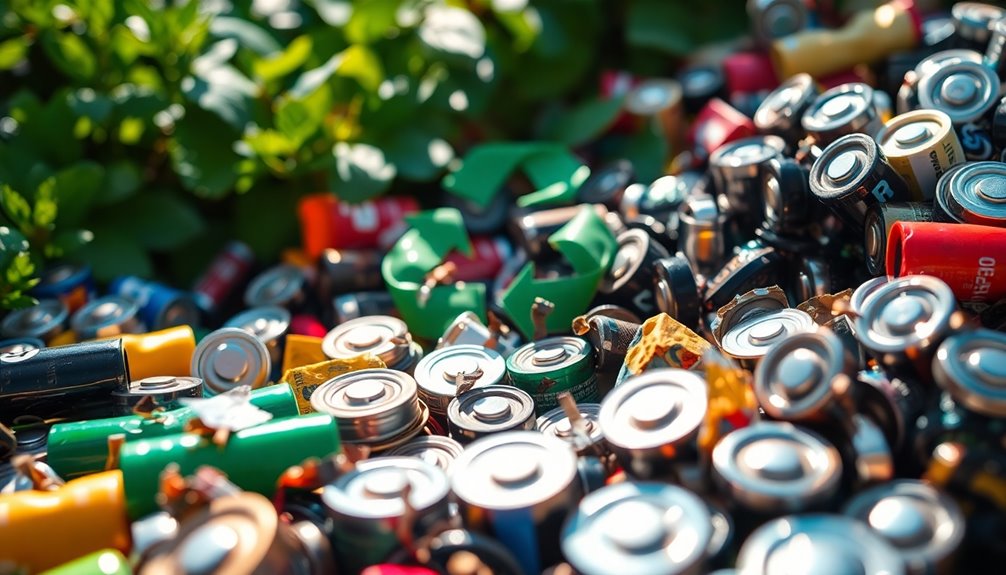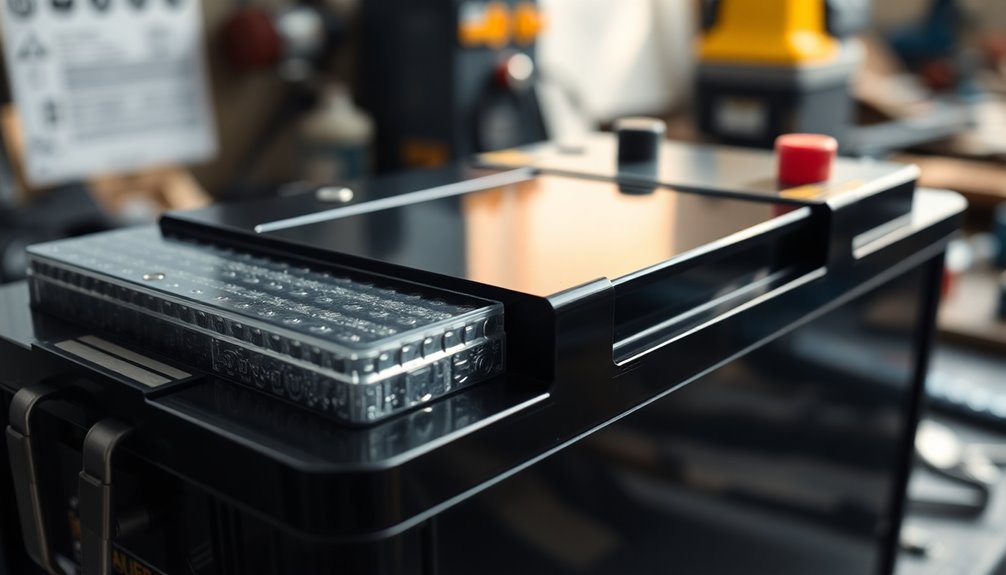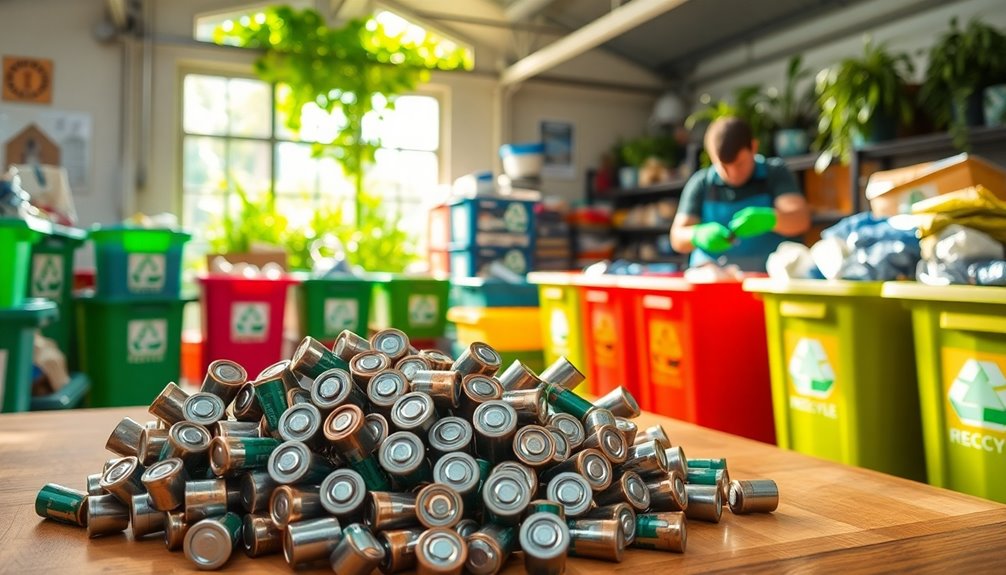Yes, batteries are recyclable. This includes popular types like lithium-ion and lead-acid batteries. Recycling helps reduce pollution and recovers valuable materials, like lithium and cobalt. You'll be pleased to know that many batteries have impressive recycling rates—up to 96% for lithium-ion! Yet, some misconceptions exist about disposal rates and processes. Knowing how and where to recycle is essential for protecting the environment and promoting sustainability. To better understand what happens to your batteries after disposal and the latest trends in recycling, keep exploring this important topic further.
Key Takeaways
- Many types of batteries, including lithium-ion, nickel-cadmium, and lead-acid, are recyclable with high recovery rates for valuable materials.
- Recycling batteries reduces environmental pollution and promotes sustainability by diverting hazardous waste from landfills.
- Accurate recycling rates for lithium-ion batteries can reach up to 96%, debunking misconceptions about their disposal.
- Advanced recycling technologies and infrastructure are evolving, enhancing efficiency and increasing the recovery of essential metals.
- Government initiatives, like the Bipartisan Infrastructure Law, are investing in battery recycling, supporting economic growth and job creation.
Benefits of Recycling Batteries

When you recycle batteries, you not only help reduce environmental pollution but also promote sustainability.
By diverting hazardous waste from landfills, you protect soil and water supplies from toxic substances. Recycling allows you to repurpose used batteries into recycled materials, conserving valuable natural resources.
This process recovers essential metals like lithium, cobalt, and nickel, which are important for new lithium-ion batteries and the battery industry. It contributes to a circular economy by enabling energy storage and minimizing the need for virgin materials.
Plus, increased recycling initiatives can create jobs in local communities, further enhancing economic growth.
Ultimately, your commitment to battery recycling plays an essential role in reducing environmental pollution and supporting a healthier planet.
Misconceptions About Battery Disposal
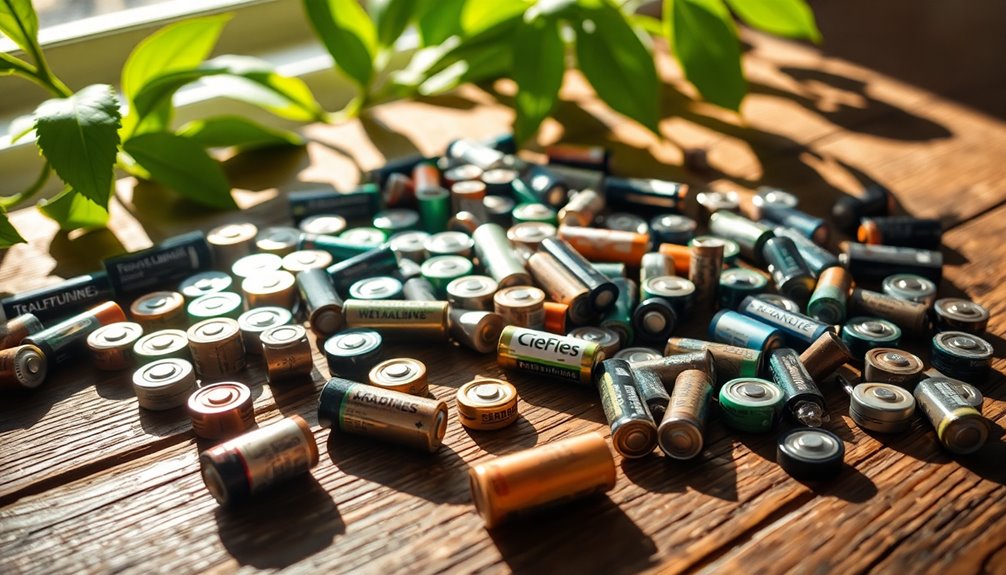
Many people believe that most lithium-ion batteries end up in landfills, but this isn't the case. In fact, actual recycling rates are much higher, especially in Europe. Misleading statistics have created confusion around battery disposal, leading you to think that only 5% are recycled. This figure stems from misinterpretations of collection data.
Here's a quick comparison of battery disposal facts:
| Fact | Details |
|---|---|
| Recycling rates for lithium-ion | Considerably higher than 5% |
| Industrial battery regulations | Banned from landfills in Europe |
Accurate recycling data is essential for understanding EV battery recycling and improving recycling capacity. By addressing these misconceptions, we can foster a better dialogue about battery sustainability.
Types of Recyclable Batteries
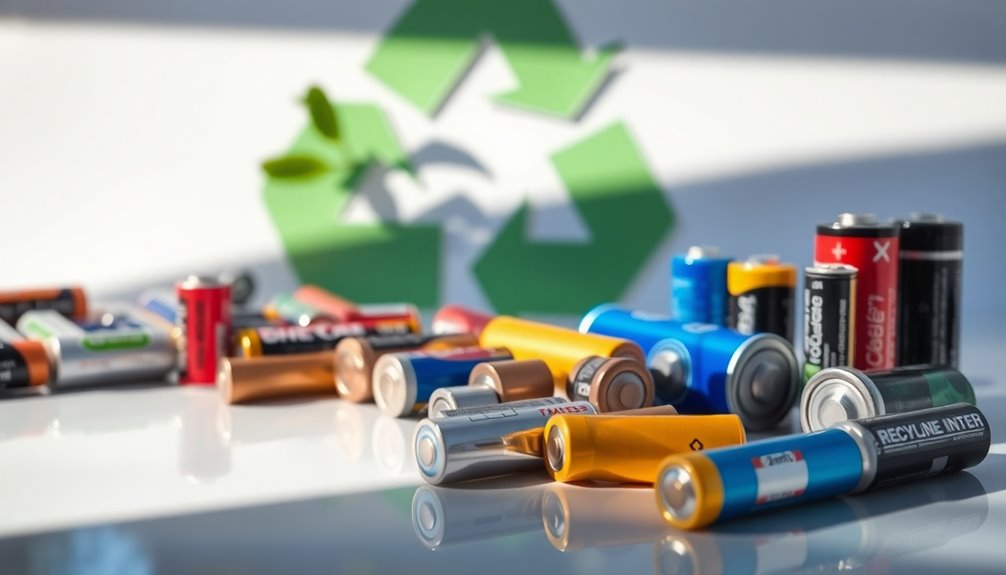
Understanding the types of recyclable batteries is key to promoting sustainable practices.
Lithium-ion batteries are recycled effectively, with recovery rates ranging from 25% to 96%. Additionally, nickel-cadmium and nickel metal hydride batteries, both common rechargeable battery types, can be recycled, helping reduce toxic chemicals in landfills.
Lead-acid batteries, often found in vehicles, boast an impressive recycling rate of nearly 90%, allowing recycling companies to recover lead and casing materials for new production.
While alkaline batteries can be recycled, options vary by region, as their recycling isn't always cost-effective.
Mercury, silver oxide, and zinc air batteries also require regulated handling to prevent environmental contamination.
Understanding these battery types helps you make informed recycling choices.
Recycling Process Overview
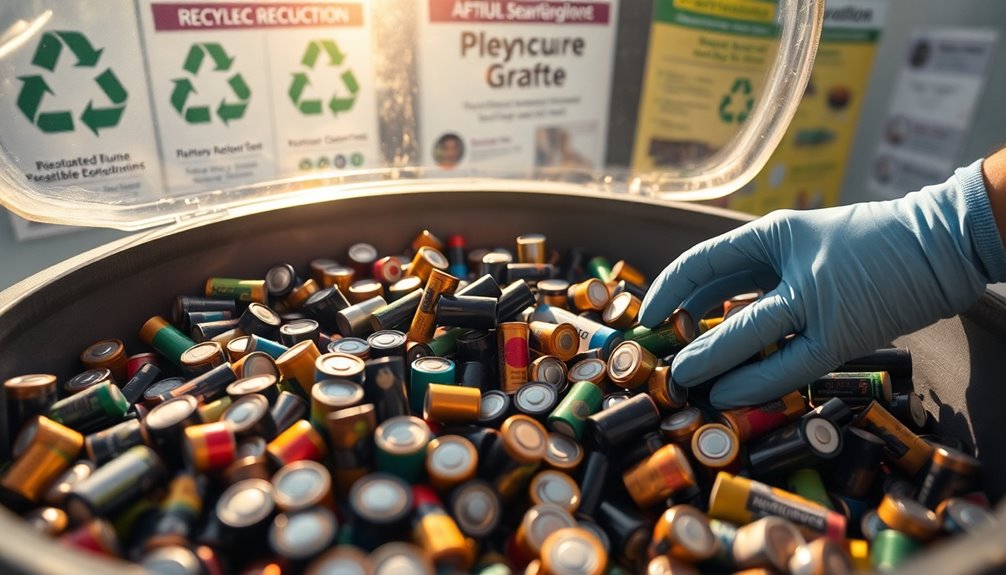
As you engage in the recycling process for batteries, it's vital to know how it all begins. The process kicks off with dismantling spent electric vehicle batteries, where specialized recyclers extract circuitry, wires, and plastics.
Next, battery cells are crushed, separating valuable minerals like lithium, cobalt, and nickel essential for new battery production. Depending on the recycling technology used, recovery processes can recover between 25% to 96% of materials from lithium-ion batteries.
Effective waste management guarantees components like battery casings are also processed, minimizing waste.
With continuous advancements in recycling technologies, such as direct recycling and relithiation methods, efficiency increases while reducing environmental impacts, making the recycling process more sustainable.
Special Handling for Damaged Batteries
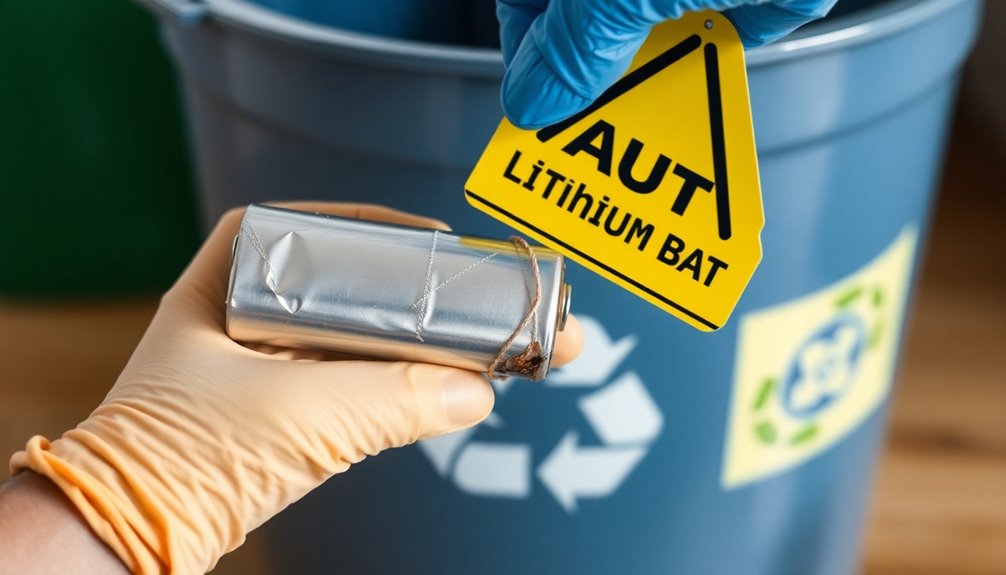
While recycling batteries is an important process, special care is needed when it comes to handling damaged batteries. You should store damaged batteries in plastic bags to contain any leaks and prevent environmental hazards. It's essential to separate leaking or physically damaged batteries from others to avoid risks of fire or explosions. Always tape the terminals of damaged batteries to prevent short circuits before placing them in designated collection containers. Additionally, notify the Hazardous Waste team for special pickup requests. Proper handling helps mitigate toxic materials leaching into water supplies, protecting our environment.
| Action | Purpose |
|---|---|
| Tape battery terminals | Prevent short circuits |
| Store in plastic bags | Contain leaks and hazards |
| Notify Hazardous Waste team | Guarantee safe disposal |
Future of Battery Recycling
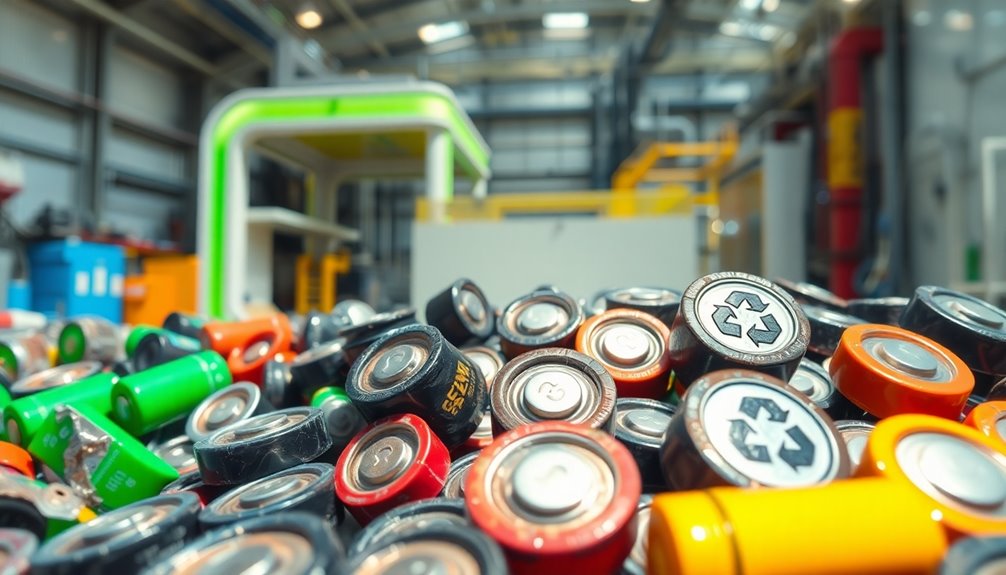
As battery recycling infrastructure expands, you'll see new economic growth opportunities emerge in your community.
With increased mandates for sustainable practices, the industry will likely evolve to meet the rising demand for efficient recycling methods.
This shift not only supports a greener future but also creates job prospects in the growing field of battery management.
Recycling Infrastructure Expansion
With the increasing reliance on electric vehicles, the need for robust battery recycling infrastructure has never been more urgent. The Bipartisan Infrastructure Law's $2.8 billion investment highlights this importance, aiming to enhance collection rates for lithium-ion batteries.
By 2022, recycling capacity for battery materials reached 105,150 tons annually, showcasing progress in waste management. As projections suggest 26.4 million EVs on the road by 2030, the demand for improved recycling facilities will only grow.
The EU Battery Regulation will require a certain percentage of recycled content in new batteries, further driving the need for these advancements. Investing in recycling infrastructure not only supports the Circular Economy Perspective but also creates local jobs and fosters sustainable growth in the electric vehicle market.
Economic Growth Opportunities
Given the rapid growth of electric vehicles, you'll find that the future of battery recycling is packed with economic growth opportunities.
As the EU Battery Regulation pushes for recycled materials in new batteries, demand will soar, increasing the economic value of recycling lithium-ion batteries.
With projections of 26.4 million electric vehicles by 2030, you'll see a greater need for recycling capabilities, leading to job opportunities in new recycling plants.
Currently, only 59% of available batteries are recycled, highlighting substantial growth potential.
By developing advanced recycling technologies and establishing a closed-loop system, costs can be reduced, and raw material availability can increase.
This shift not only supports sustainability but also strengthens the economic viability of the recycling industry.
Sustainable Practices Mandates
The future of battery recycling is increasingly shaped by sustainable practices mandates that drive the industry forward.
The EU Battery Regulation sets specific targets, requiring at least 12% recycled content in new batteries by 2025, rising to 20% by 2030. This focus on sustainability is crucial for reducing reliance on mined materials.
You can expect to see:
- Enhanced recycling infrastructure funded by initiatives like the Bipartisan Infrastructure Law.
- A closed-loop system fostering domestic sourcing of EV materials under the Inflation Reduction Act.
- Job creation through the establishment of new recycling facilities.
These efforts not only support electric vehicle sustainability but also guarantee valuable materials are effectively recovered, paving the way for a greener future.
Frequently Asked Questions
Do Batteries Really Get Recycled?
You might wonder if batteries really get recycled. The truth is, they do!
In fact, recent estimates show that about 59% of end-of-life batteries are recycled globally. While many believe the recycling rates are much lower, that misconception stems from misinterpreted collection data.
With current technologies, over 90% of valuable minerals can be recovered, making battery recycling not only feasible but also economically beneficial.
Are Lithium Batteries Worse for the Environment Than Fossil Fuels?
Imagine a world where your choices shape the planet's future. When you compare lithium batteries to fossil fuels, you'll find lithium's environmental impact isn't as dire.
Sure, fossil fuel extraction leads to pollution and greenhouse gases, but lithium-ion batteries, with their higher recycling rates and efficient recovery of materials, show promise.
You're supporting a more sustainable future by choosing batteries, as they often provide better resource efficiency over their lifecycle than fossil fuels.
Are AA Batteries Actually Recycled?
Yes, AA batteries can be recycled, but their recycling rates are often low.
You'll find designated collection points at council sites and certain retailers where you can drop them off.
The recycling process separates materials like zinc and manganese for reuse, but local infrastructure impacts efficiency.
Since many people aren't aware of these options, it's essential to spread the word and encourage better recycling habits in your community.
Does Home Depot Really Recycle Batteries?
Yes, Home Depot really does recycle batteries!
You can find collection bins for various battery types at select store locations. They partner with Call2Recycle to guarantee responsible processing, so you can feel good about dropping off your used batteries.
This initiative supports environmental sustainability by reducing landfill waste.
Just make certain to check with your local Home Depot to see if they participate in the program, as availability may vary.
Conclusion
In the grand scheme of sustainability, recycling batteries is like planting seeds for a greener future. By choosing to recycle, you're not just disposing of old batteries; you're nurturing a cycle that benefits the planet. Don't fall for the myths surrounding battery disposal—be a part of the solution! Embrace the chance to make a difference, and remember, every small action counts in creating a cleaner, healthier world for generations to come.

